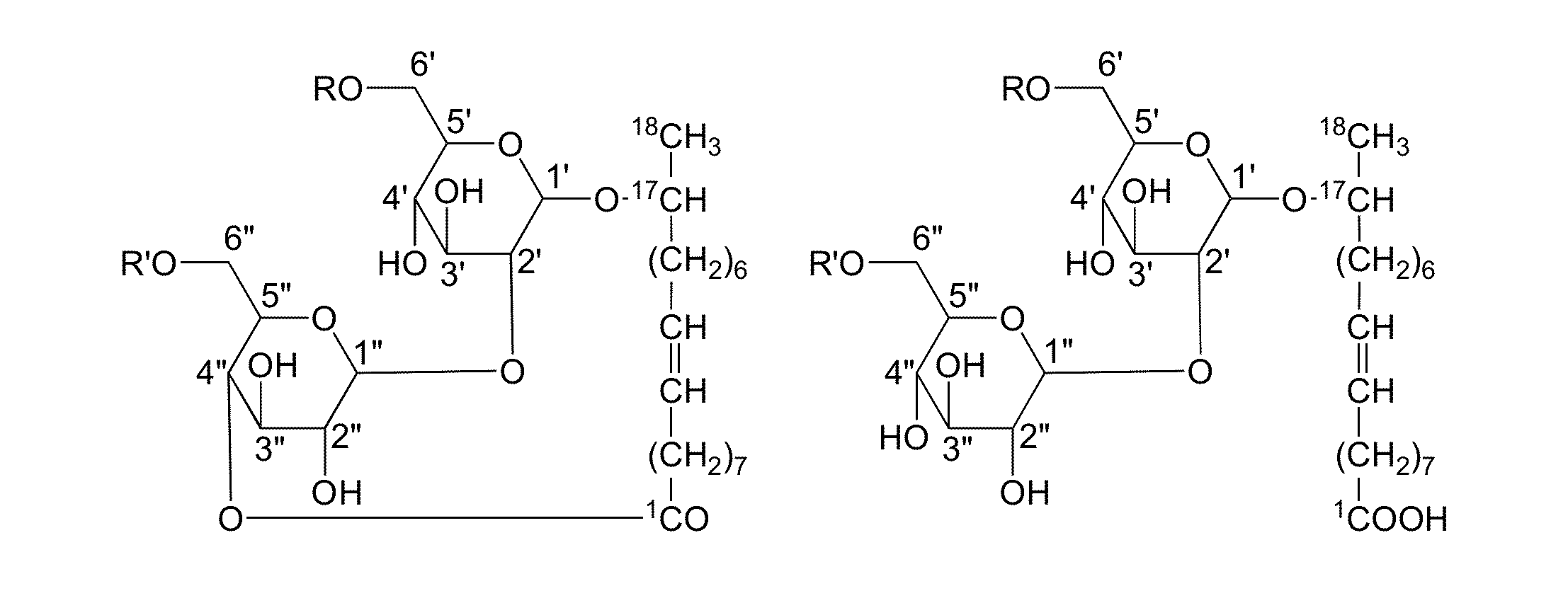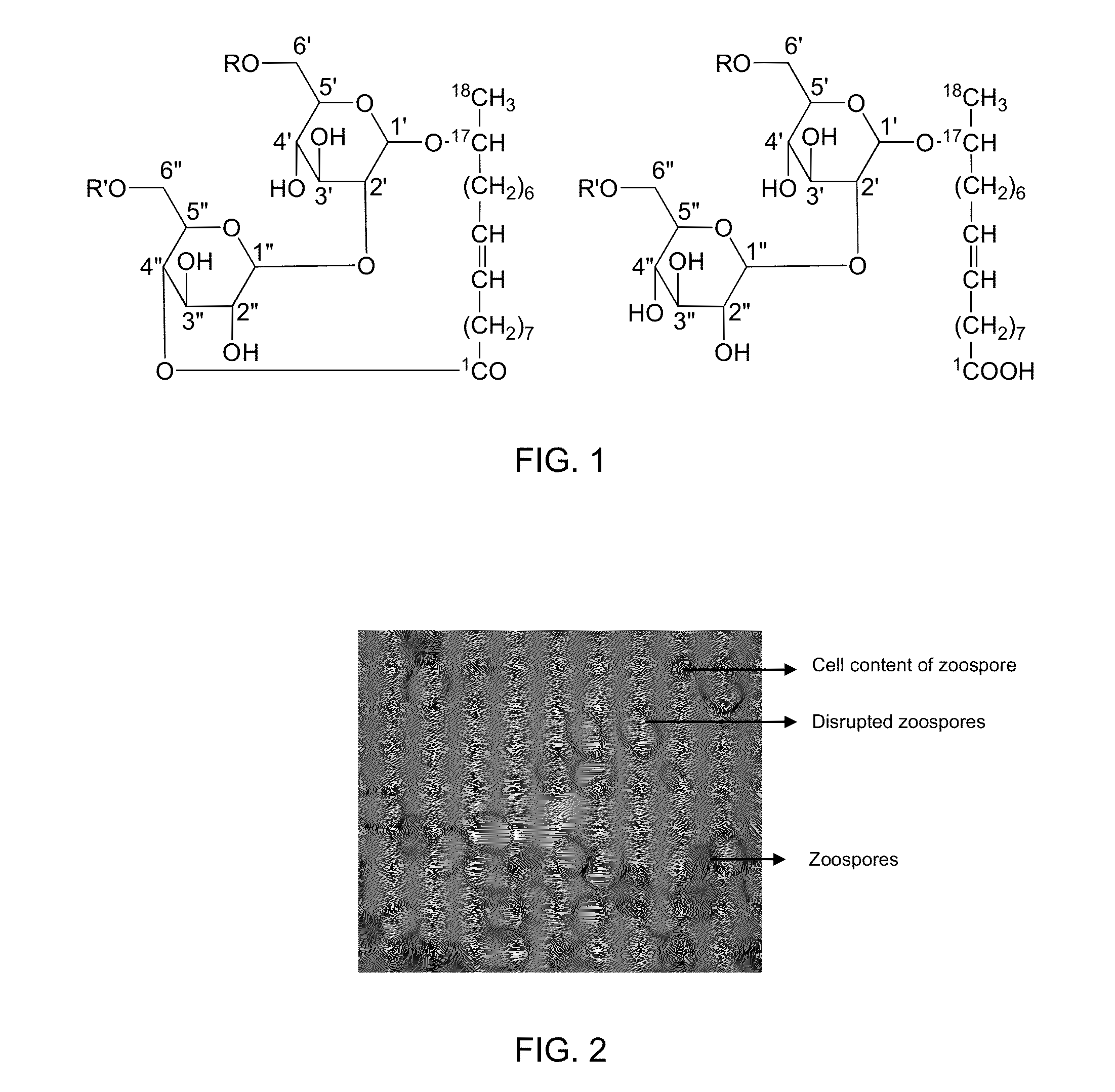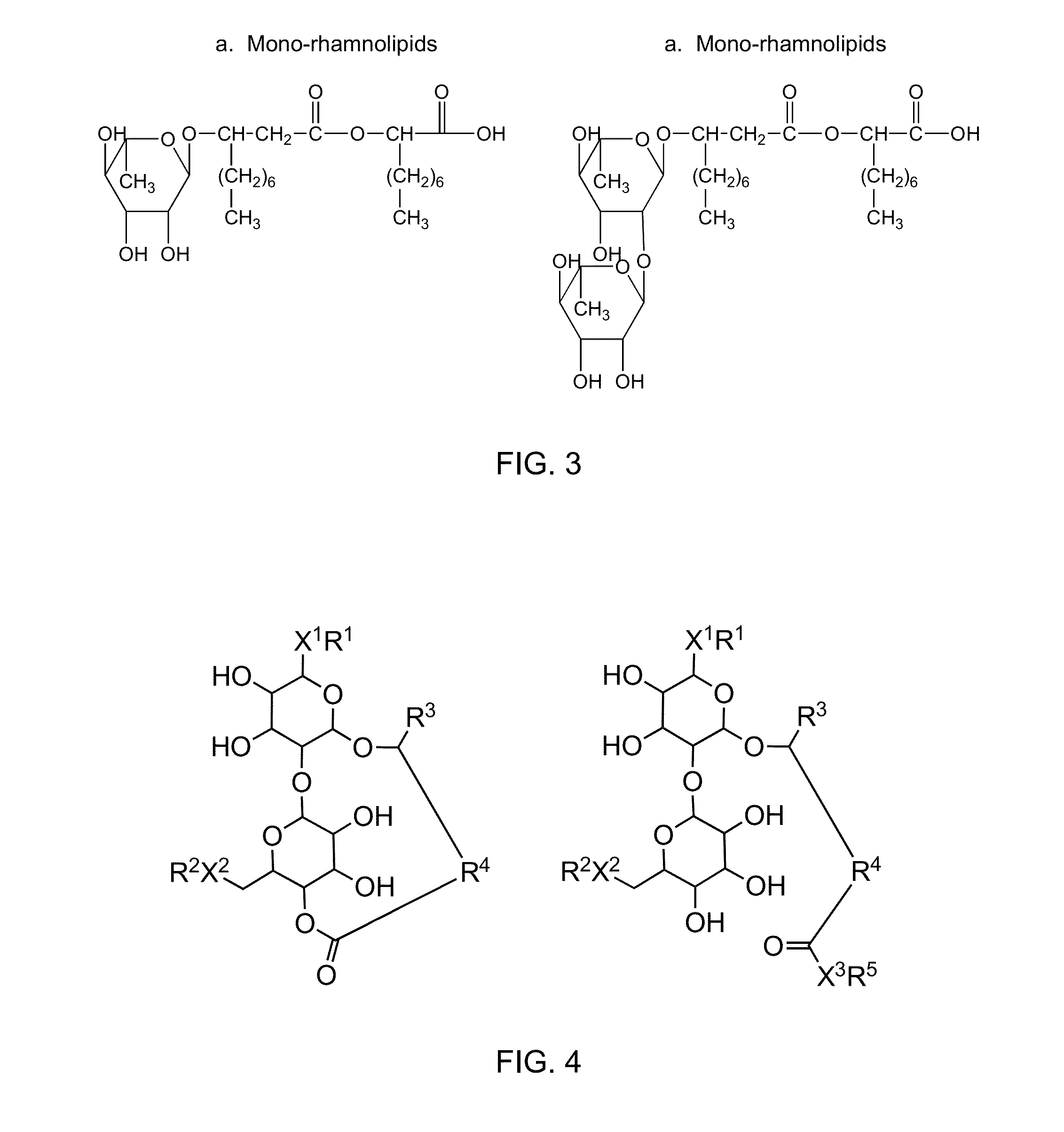Modified sophorolipids for the inhibition of plant pathogens
a technology of plant pathogens and sophorolipids, which is applied in the field of sophorolipids, can solve the problems of low activity of the structure found active in these applications, inconvenient use, and one skilled in the art cannot anticipate the modification of the sophorolipid
- Summary
- Abstract
- Description
- Claims
- Application Information
AI Technical Summary
Benefits of technology
Problems solved by technology
Method used
Image
Examples
example 1
Antifungal Activity of Natural (Compound Code 1), Lactonic (Compound Code 2), Hydrogenated Lactonic (Compound Code 5) and Hydrogenated Natural (Compound Code 4) Sophorolipids
[0064]The hydrogenated lactonic sophorolipids have antifungal activity, which were confirmed by experiment and observations. Sophorolipid samples were dissolved in 5% ethanol solution to a final concentration of 10 mg / mL that was used as a stock solution. The stock solution (100 μL) was added into a 96 well microplate and serially diluted from 10 mg / mL to 0.0024 mg / mL using culture medium. After serial dilution, 80 μL of fresh culture medium and 20 μL of spore suspension were added to each well and the plates were incubated for 7 days. The minimum inhibitory concentration (MIC) was determined to measure antifungal activity of sophorolipid-derived compounds. MIC values for antifungal activity were determined by the absence of visible growth in the micro wells containing sophorolipid after 7 days of incubation. Co...
example 2
Antifungal Activity of Sophorolipid Ester Derivatives
[0065]The sophorolipid esters have antifungal activity, which was confirmed by experiment and observations. Sophorolipid samples were dissolved in 5% ethanol solution to a final concentration of 10 mg / mL and used as a stock solution. The stock solution (100 μL) was added into a 96 well microplate and serially diluted from 10 mg / mL to 0.0024 mg / mL using culture medium. After serial dilution, 80 μL of fresh culture medium and 20 μL of spore suspension were added to each well and the plates were incubated for 7 days. MIC values were determined to measure antifungal activity of this family of sophorolipid derivatives. MIC values for antifungal activity were determined by the absence of visible growth in the micro wells containing sophorolipid-derivatives after 7 days of incubation. These results show that methyl (compound code 6) and butyl esters (compound code 8) actively inhibited the growth of three pathogens while other esters (co...
example 3
Antifungal Activity of Sophorolipid Amide Derivatives
[0066]The ring-opened SL-amide derivatives have antifungal activity, which was confirmed by experiment and observations. Sophorolipid samples were dissolved in 5% ethanol solution to a final concentration of 10 mg / mL and used as a stock solution. The stock solution (100 μL) was added into a 96 well microplate and serially diluted from 10 mg / mL to 0.0024 mg / mL using culture medium. After serial dilution, 80 μL of fresh culture medium and 20 μL of spore suspension were added to each well and the plates were incubated for 7 days. The MIC was determined to measure antifungal activity of the sophorolipid-derivatives. MIC values for antifungal activity were determined by absence of visible growth in micro wells containing sophorolipid derivatives after 7 days of incubation. Among all sophorolipids screened for antifungal activity, the family of amide derivatives shows high activity against four pathogens. The results are shown in Table ...
PUM
| Property | Measurement | Unit |
|---|---|---|
| Angle | aaaaa | aaaaa |
| Angle | aaaaa | aaaaa |
| Angle | aaaaa | aaaaa |
Abstract
Description
Claims
Application Information
 Login to View More
Login to View More - R&D
- Intellectual Property
- Life Sciences
- Materials
- Tech Scout
- Unparalleled Data Quality
- Higher Quality Content
- 60% Fewer Hallucinations
Browse by: Latest US Patents, China's latest patents, Technical Efficacy Thesaurus, Application Domain, Technology Topic, Popular Technical Reports.
© 2025 PatSnap. All rights reserved.Legal|Privacy policy|Modern Slavery Act Transparency Statement|Sitemap|About US| Contact US: help@patsnap.com



